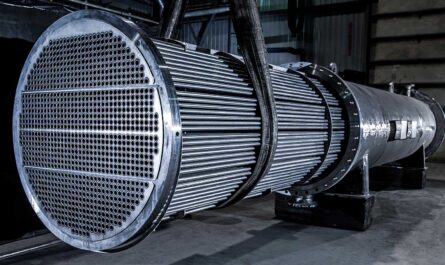Airship systems are unmanned lighter than air platforms that are utilized for various applications. They operate using lighter-than-air balloons or airships called aerostats that are tethered with long cables or advanced composite lines to the ground. Aerostats have been evolving for over a century and their potential is still being explored for new uses. They offer an efficient surveillance solution that is less costly compared to manned aircraft or satellite systems.
Main Components of an Aerostat Systems
An aerostat system consists of several key components working in cohesion:
Aerostat – This is the main airborne part containing gas bags inflated with helium or hydrogen. Aerostats can have varying sizes based on application from small compact balloons to large airships. Aerostat Systems are built with lightweight composite materials and polymer coatings to withstand different weather conditions.
Payload – Cameras, radars, communication equipment and other sensors are mounted on gondolas or underslung pods attached to the aerostat. Payloads can be switched based on mission needs for tasks like surveillance, reconnaissance and more.
Tether – Robust high strength cords or cables made from advanced fibers anchor the aerostat to its ground station. Composite tethers are preferred for their lightweight strength and resistance to environmental factors. They also contain electric/fiber optic cables for power and data transmission.
Ground Control Station – This comprises the power generators, control systems, communication equipment and operator consoles on land. It processes data received from aerostat payloads in real-time and relays to command centers.
Launch and Recovery Systems – Aerostat Systems are launched and retrieved using specialized equipment like winches and trailers to maneuver them effectively. Modern automated systems ensure quick turnarounds.
Applications of Airship systems
Military Surveillance – Aerostats mounted with EO/IR cameras, SIGINT sensors provide persistent surveillance over large border areas. They help detect enemy movements and secure perimeters cost-effectively. Many armed forces around the world extensively use aerostat fleets.
Homeland Security – Similarly, aerostats are recognized as a valuable asset by law enforcement agencies and customs for monitoring activities near sensitive infrastructure and borders. They aid anti-terrorism and anti-smuggling operations from above.
Disaster Management – In times of natural calamities, aerostats fitted with high-resolution cameras can map affected regions and assist relief tasks by locating survivors. They offer birds-eye situational intelligence to emergency responders.
Communication Relays – In remote areas with patchy terrestrial networks, aerostat-mounted radio relays help enhance communication ranges for cellular, radio and broadband services to far-flung communities. Satellites cannot substitute in such scenarios.
Environmental Monitoring – Airship systems carrying specialized environmental sensors provide continuous monitoring of atmospheric conditions, pollution levels, weather patterns over large geographical scales and help scientists and researchers.
Benefits of Airship systems
Persistent Surveillance – Aerostats have the capability to hover stationary at precise positions or move areas slowly for continuous monitoring without requiring regular refueling like aircraft. This allows round-the-clock aerial observation.
Cost Effectiveness – With low acquisition and operating expenses in comparison to aircraft, helicopters or UAV fleets, airship systems offer an affordable method of persistent surveillance for security agencies and civilian needs.
Endurance – Aerostats can remain airborne for extended periods ranging from a few days to several weeks depending on payload capacity. This surpasses the endurance of most lightweight UAVs.
Low Altitude Operation – Aerostats operate at lower altitudes around 1000-3000 feet suitable for visibility at standoff distances useful for tasks like border security or infrastructure protection.
Minimal Environmental Impact – Being electrically powered with none to low emissions, aerostat missions cause negligible air and noise pollution compared to their fossil fuel-burning airborne counterparts.
Challenges and Future Growth
While aerostats have found multiple applications supporting imaging, detection, and communication needs, certain challenges still remain in fully capitalizing their potential.
Weather sensitivity is one area as strong winds can affect operations requiring systems to auto ground or require shelters. New lighter and stronger materials aim to tackle this.
Effective launch/recovery mechanisms and compact portable ground stations are critical for rapid deployability of tactical aerostat units for short-term missions. Modular autonomous operations also facilitate this.
As aerostatics technology continues evolving, future aerostats may push the boundaries with capabilities like extended endurance through renewable energy integration, intelligent autonomy features, multi-sensor fusion payloads and even unmanned cargo transportation roles. Strategic long term investment coupled with innovative engineering will promote aerostat growth in both military and civilian sectors worldwide.
airship systems offer a cost-effective persistent surveillance solution particularly suitable for security agencies, disaster response teams and telecom needs in remote regions, with their long endurance, minimal operating costs and environmental friendliness. Advancements aim to further optimize aerostats to realize their surveillance and industrial potentials.
*Note:
1. Source: Coherent Market Insights, Public Source, Desk Research
2. We have leveraged AI tools to mine information and compile it.



